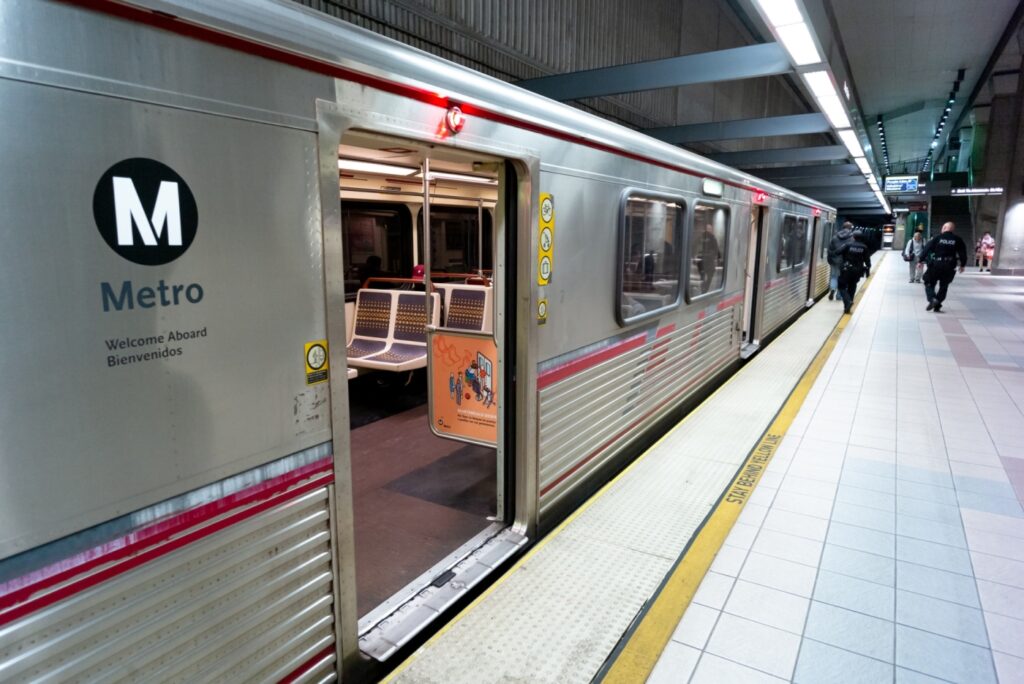
SACRAMENTO – The last time I considered using public transit was in San Francisco last month, where I dreaded the thought of climbing up the long incline from Chinatown to Nob Hill. I decided to make the calorie-burning trek on foot after realizing I needed to pre-purchase my ticket on the touristy cable car. I can’t recall the last time I actually took transit. When is the last time you hopped on a bus or light-rail line to get to work or anywhere at all?
If your answer also is “years ago,” then we’re in good company. The Southern California Association of Governments found the “median” resident of SCAG’s six counties (Los Angeles, Orange, Riverside, San Bernardino, Ventura and Imperial) made zero transit trips in a year. The “average” resident made 35 annual transit trips, which isn’t impressive given I made six trips in my truck and motorcycle yesterday.
SCAG finds only 2 percent of the region’s population uses transit “very frequently” and that’s concentrated among the poorest residents. That’s not to say transit isn’t important. It makes sense in urban centers, for certain commutes (think Metrolink) and, again, as a last resort for people who can’t afford cars. Those SCAG numbers come from 2018 – before the pandemic, which caused ridership to plummet. It’s only recovered moderately.
Yet before Monday’s budget deal, transit supporters were predicting doom if Gov. Gavin Newsom didn’t agree to bail out these systems. He resisted for months, but finally agreed to a $5.1-billion package that provides additional operating subsidies and construction dollars. That spares transit systems from facing difficult choices regarding which lines to keep operating, which projects to fund and which departments to trim. Perish the thought.
“Like many public transportation systems around the country, some of California’s transit agencies are reeling from pandemic-induced declines in ridership and the risk that federal COVID aid will dry up,” wrote Farhad Manjoo in a New York Times op-ed backing a California bailout. “Transit agencies are preparing to adjust their budgets and services to new travel patterns, but implementing those plans will take time – and in the short term they are pretty strapped.”
Oh, please. Transit agencies were struggling long before anyone had heard of COVID-19. Ridership levels in almost every major transit system nationwide had been plunging for two decades. The agencies have had plenty of time to adjust to reality, but have not used it to develop new business models that appeal to riders. They haven’t even turned the corner on transit crime waves that literally scare off riders.
Instead of cutting superfluous bureaus or staff, reducing compensation (or at least reforming benefit packages), outsourcing contracts and adjusting routes or trying innovative solutions (smaller buses, privatized alternatives), they’ve continued to offer these services in an antiquated way. Transportation planners are heavily invested in prodding Californians to give up their cars and use transit, yet they don’t offer systems that are reliable or appealing.
Instead, they offer the banal choice of more public money or fewer routes, which leads to transit boosters’ concerns about a “death spiral.” If people aren’t taking transit now, even fewer will take transit if it cuts service, which leads to even fewer riders and lower revenues, and then further cuts. Rinse and repeat. How long before the state’s transit agencies will burn through their coming cash infusion and then start lobbying for even more subsidies?
As I noted in my new short book, “Putting Customers First,” the state’s major transportation agencies focus on a variety of social concerns ranging from “equity platforms” to promoting affordable housing. The Caltrans future blueprint is more about battling greenhouse-gas emissions than creating bus systems that arrive on time and freeways that are less congested. It’s a long mish-mash of politically correct goals, bolstered by legislation that treats customer concerns as a side issue.
Related Articles
I’m a tattoo artist, and I support the Supreme Court’s ruling protecting artistic freedom
The bizarre revival of the Industrial Welfare Commission
New California law protects ‘the children’ by destroying free speech
A.I. makers must create and observe new ‘laws of robotics’
Supreme Court upholds equal rights, strikes down discriminatory ‘affirmative action’ schemes
Sure, effective transportation can boost equity, encourage housing creation and fight climate change – but it will do so with fewer costly internal bureaucracies and a razor focus on improving transit offerings. By dumping more money into current systems without any mandate for change, we only get more inanity – e.g., “road diets” that increase congestion by reducing the number of traffic lanes in a silly quest to prod us into abandoning our cars.
Newsom promised that the bailout deal features new “accountability” measures in exchange for the extra money, but the details haven’t been forthcoming. In my experience, spending proposals always promise new oversight and accountability measures to provide political cover for lawmakers who are reticent about loosening the purse strings. After the spending bill passes, those measures prove ephemeral. They might result in a toothless commission or useless future report.
In the meantime, transit service gets drearier for the few Californians who rely on it. The rest of us just continue to bypass the systems altogether, dealing with the ever-worsening roadways however we can.
Steven Greenhut is Western region director for the R Street Institute and a member of the Southern California News Group editorial board. Write to him at sgreenhut@rstreet.org.
